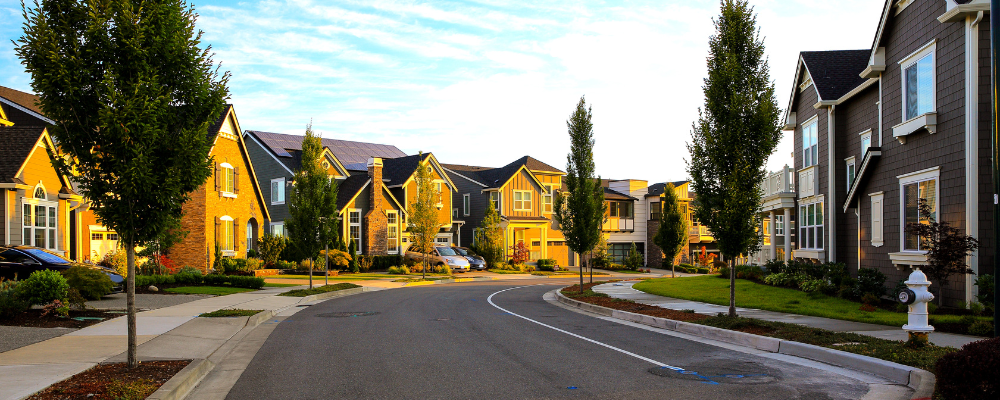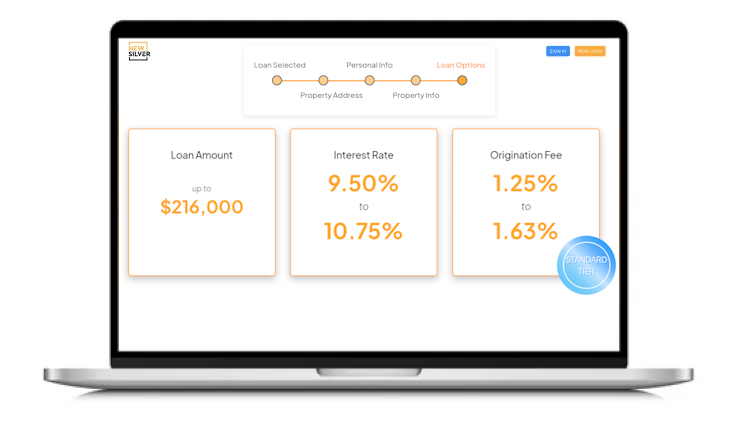The Short Answer
The key to a profitable flip is buying smart, not just selling well. Real estate investors should focus on finding properties that are undervalued but offer clear potential for improvement—without hidden structural problems or legal complications. Cosmetic distress is ideal, as it allows you to increase the property’s value through upgrades like fresh paint, new flooring, and kitchen or bathroom remodels without diving into costly foundation or roof work. Homes with solid layouts, built after 1978, and located in growing or high-demand neighborhoods give you a better shot at a smooth renovation and a quick sale, where a real estate agent can be a useful tool.
You’ll also want to make sure the numbers work. Use tools like the 70% Rule to guide your purchase decisions and protect your margins. Look for properties with clear comps, clean titles, and manageable rehab scopes that align with your budget, timeline, and skill level. Smaller homes in the right neighborhoods, especially those priced below market due to cosmetic wear or motivated sellers, tend to offer the best return on investment. With the right due diligence and strategy, you can have a successful flipping journey.
What To Look For When Buying A House To Flip
Flipping houses can be a profitable strategy but only if you choose the right property from the start. Not every fixer-upper is worth your time or investment, and knowing what to look for is key to avoiding costly mistakes. From the condition of the home to the location, layout, and price, every factor matters. In this guide, we break down the 9 essential things to consider when buying a house to flip.
1. Cosmetic Fixer-Upper — Not a Structural Nightmare

One of the biggest mistakes new real estate investors make is taking on a house with major structural problems. These issues often spiral into budget-busting surprises and long delays that eat away at your ROI. Unless you’re a seasoned investor with experience and a flexible timeline, it’s usually better to avoid homes with serious structural red flags altogether.
Here are some structural issues that can derail your flip:
- Foundation cracks
These can signal significant settling or shifting. Horizontal cracks in particular can point to poor construction or soil movement and may require expensive stabilization techniques like underpinning. - Roof damage
A damaged or sagging roof might mean problems with the rafters or trusses—both costly and time-consuming to repair. Left unchecked, roof issues can lead to water damage and structural deterioration. - Uneven or sloping floors
This could be due to problems with floor joists, foundational shifts, or water damage. Fixing it often requires jacking up parts of the home and reinforcing key supports, which is no small task. - Bowing or sagging walls
Whether caused by shifting foundations, termite damage, or poor construction, these types of problems are typically complex and expensive to fix—often requiring partial reconstruction. - Crumbling masonry
Deteriorated brick or stonework may need repointing or full repairs, especially if it’s allowing water intrusion. This can lead to additional issues like mold and rot, increasing costs further.
Instead of structural headaches, look for properties with surface-level cosmetic problems, the kind that make a house look rough but are relatively straightforward to fix. These homes often come at a discount and have great potential to build equity quickly once updated.
Here’s what to target:
- Dated kitchens and bathrooms
These are often the first areas buyers notice. Remodeling a kitchen can recoup about 77.6% of the cost on average, while bathroom remodels bring a 66.7% ROI, according to Remodeling Magazine’s Cost vs. Value report. - Worn-out flooring
Replacing carpet or refinishing hardwood floors is one of the highest-value upgrades you can make. New flooring can increase a home’s perceived value dramatically with relatively low effort. - Peeling paint or tired exterior finishes
A fresh coat of paint remains one of the most cost-effective improvements, offering over 100% ROI in some markets. It instantly updates a property’s look and makes it more attractive to buyers. - Overgrown landscaping
Curb appeal matters. Trimming back trees, cleaning up walkways, and planting fresh greenery can make a big difference without a huge spend.
Before making an offer, run the numbers. Compare the purchase price plus renovation costs to the After-Repair Value (ARV) to make sure there’s enough margin for a solid return. The best flips are the ones where the problems are skin-deep, but the potential is big.
2. Strong Layout and Solid “Bones”

A smart flip starts with a home that has a functional floor plan and good structural “bones.” Look for layouts that feel open or have the potential to be opened up with minimal renovation. Choppy or awkward spaces can hurt resale value and be costly to fix.
Homes with broad buyer appeal typically have:
- Three or more bedrooms and at least two bathrooms
- Plenty of natural light and curb appeal potential
- A garage or dedicated parking space
Try to avoid properties with tiny, unusable bedrooms, unpermitted additions, or layouts that would require major reconfiguration. These features can turn into money pits and limit your resale options.
3. Built After 1978 (If You Can Help It)

There’s a reason many experienced investors prefer homes built after 1978. Older properties may contain lead-based paint, which triggers strict EPA Renovation, Repair, and Painting (RRP) rules during renovation. Violating these regulations can lead to fines of up to $30,000 per offense.
Very old homes, especially those built before 1950, can come with expensive issues such as:
- Knob-and-tube wiring
- Galvanized plumbing
- Asbestos insulation
- Costly code compliance upgrades
In contrast, homes built from the 1980s onward are more likely to have modern framing, plumbing, and electrical systems already in place. This lowers the risk of major surprises and keeps renovation costs more manageable.
4. Buy the Smallest House in a Good Neighborhood

One of the smartest strategies to use when flipping houses is buying a home that’s smaller than the neighborhood average. This gives you more potential to add value without over-improving. When you renovate a modest-sized home in an area full of larger properties, it naturally pulls up the value and appeal.
Smaller homes are also cheaper to renovate. With less space to update, your materials and labor costs stay manageable, helping you preserve your margins and improve your return.
Try to avoid the biggest home on the block or anything with strange additions or awkward designs. These can make resale tougher and limit how much you can ultimately sell the property for.
5. Easy Wins That Drive Resale Value

Smart investors know to target homes with obvious upgrade potential. A good flip isn’t about reinventing the property—it’s about making changes that will directly impact how quickly it sells and how much it’s worth.
Value-adding opportunities might include:
- Opening up common living spaces
- Adding or upgrading a bathroom
- Transforming unfinished areas like basements or attics
- Enhancing the exterior with better landscaping or outdoor features
The goal is to make the home more desirable without over-complicating the renovation. If prospective buyers can easily picture themselves living there, you’re adding value in the right places.
6. Make Sure the Title Is Clean

Before buying a property to flip, always verify that it has a clean title. This means no outstanding liens, unpaid property taxes, or legal disputes tied to the home. Overlooking this step can lead to delays, added costs, or even the inability to sell the property later on.
A professional title search confirms that the seller legally owns the property and that no one else has a financial or legal claim to it. This is especially important with off-market or foreclosure deals, where financial risk or distress often results in title complications that aren’t immediately obvious.
To protect your investment, work with a reputable title insurance company or real estate attorney to review the title thoroughly before closing. Spending a little extra up front can save you from costly surprises and help ensure a smooth flip from purchase to resale.
7. Pick the Right Location

A successful house flipping project isn’t just about the home renovation—it’s about where the home is located. Even a beautifully updated property can sit on the market if it’s in the wrong area. Choosing a high-demand neighborhood is one of the most important factors in flipping houses for a solid return.
Here’s what to look for:
- Low Days on Market (DOM): Fast-selling homes indicate strong buyer demand. If properties in the area are moving quickly, your flip has a better shot at selling fast too.
- Strong comparables (comps): Make sure there are recently sold homes with similar features and square footage. These comps help confirm the potential resale value and support your projected ARV. A real estate agent or real estate website can help with this.
- Desirable amenities: Buyers pay more for homes near good schools, parks, public transit, and shopping. These extras can make your flip more attractive and help it sell faster.
- Signs of growth: Neighborhoods undergoing revitalization or with new developments nearby often attract more prospective buyers. These areas can offer strong upside potential for house flipping, as demand continues to rise.
It’s best to avoid areas with limited buyer interest, such as remote or declining markets, or neighborhoods where inventory is high but prices have gone flat. Location can make or break your flip, so choose wisely.
8. Buy Below Market Value

When flipping houses, profit is made at the time of purchase, not just at the sale. That’s why finding properties priced below market value is key. The lower you buy, the more room you have to renovate, add value, and sell for a profit.
Look for motivated sellers who are eager to close quickly. These might be homeowners facing foreclosure, those going through a divorce, or people who have inherited a property they don’t want to keep. You can also find great deals on homes that are simply outdated or neglected but have no major structural issues.
One popular guideline investors use is the 70% Rule. Start by calculating the home’s After Repair Value (ARV), then multiply that number by 70%. From there, subtract your estimated renovation costs. The result is the maximum price you should consider paying for the property.
While not a hard-and-fast rule, this formula is a solid starting point when deciding if a property is priced right for a profitable house flipping project.
9. Matches Your Budget and Timeline

Not every flip is worth the effort, especially if it stretches your finances or takes too long to complete. Before you commit, make sure the project fits your renovation budget, timeline, and experience level.
The scope of the rehab should align with:
1. Your available funds for repairs and upgrades
2. Your timeline for completing the flip (remember, carrying costs like loan interest, insurance, and utilities can add up fast)
3. Your skill level – whether you’re doing the work yourself or hiring a full crew
For newer investors, a simpler flip with a 2 to 3-month renovation timeline is often a smarter move than a full-scale overhaul that could take six months or more. The more manageable the project, the easier it is to stay on track and protect your profit margin.
Final Thoughts - With Enough Due Diligence You Can Find A House That Can Be Flipped
The house you choose sets the tone for the entire project. Buying the wrong property can turn into a costly mistake without various extra expenses like carrying costs, but the right property can lead to a quick sale and strong return. Focus on deals that fit your financial planning and goals, match your skill level, and have clear value-add potential. When you stick to a proven framework and do enough due diligence on each house, your chances of success rise.




